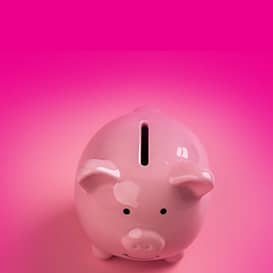
Teething will normally begin when a baby is 6 months old. The first teeth to come through are the bottom front two teeth. The process of all baby teeth erupting can take up to two years; the molars are the last to come through. However, your child won’t experience teething up to the age of two, most teething symptoms end when the front few teeth have cut through the gum.
Teething is a term used when a baby’s milk teeth are cutting through the gums which causes pain. Most babies will experience different levels of teething pain; some seem less fussed by the process than others. The milk teeth are then pushed out by the adult teeth but as the room for the teeth is already there this isn’t a painful process, however, children may find wobbly teeth painful and irritable.
You baby might experience the following symptoms of teething:
You will be able to tell if your child is teething as you will be able to see the teeth pushing through gradually. It can be a bit of little trial and error when trying to find the best soothing option for your child because every child is different.
Gum Massage – With a clean hand, gently massage your babies gums, the light pressure on the gums will help with the swelling caused by teething. This does, however, have to be done when the baby isn’t in too much pain. Try putting your hands under cold water beforehand, a cold finger will be more soothing.
Cold or Frozen Washcloths – Putting a clean washcloth in the fridge or freezer can soothe the symptoms of teething when a baby chews on it. Washcloths provide just the right amount of rough to soft ratio; they are easily chewable for the little ones and easily washable too to remove the collect germs.
Teething Toys (Soft v Hard) – As you know babies are all different, some like soft toys others prefer harder toys to massage the gums more. Having a hard teething toy actually helps apply pressure and speed up the erupting process. However, do not force hard teething toys if your baby doesn’t enjoy them as some might find it to be too painful. There are many teething toys available that are made from a variety of different materials such as silicon, rubber and toxin-free plastic. You may find you will need to experiment with different teething toys and methods before you find what works for your baby.
Chilled Food – Babies will usually find it difficult to eat whilst teething; try providing them with chilled and cold foods to soothe the pain. The process of teething can be an indication of when your baby is ready to eat harder foods, in fact, eating/sucking on harder foods such as breadsticks will help the process of the tooth eruption. Some people even freeze homemade purees which is an excellent idea, however, please be aware of the choking hazards involved when an ice cube is a certain size. You can even try crushing up the ice cubes into small pieces.
Teething Gel – There are many different Teething Gels that can be applied to help decrease the inflammation caused. This is extremely helpful when applied a night times to settle your child before they go to sleep.
Once your child has their first tooth, you should schedule a trip within 6 months. If your child is experiencing teething, has their first tooth come through or feel like you need more information on teething then get in touch with us here at Thurmaston Dental today to book an appointment.
Children will normally have all of their milk teeth by the time they are two and a half years old. Your adult teeth start to come through from the age of 6 up to the age of 13, however, this differs from person to person.
Back to BlogLorem ipsum dolor sit amet, consectetur adipiscing elit, sed do eiusmod te...


